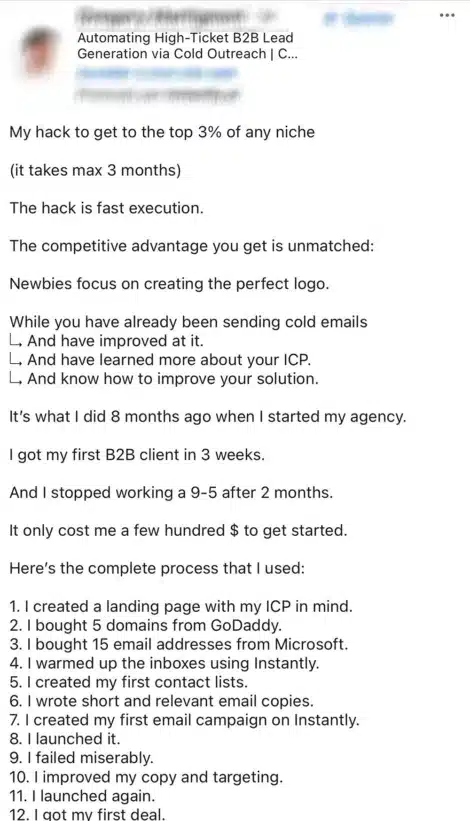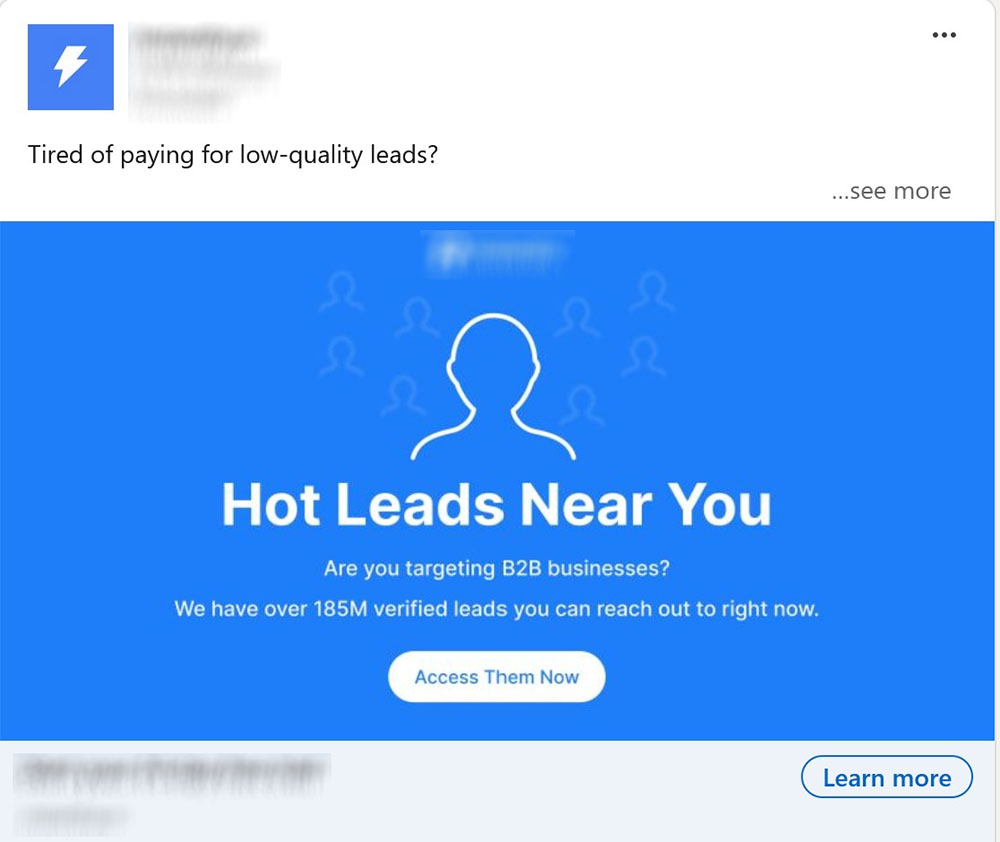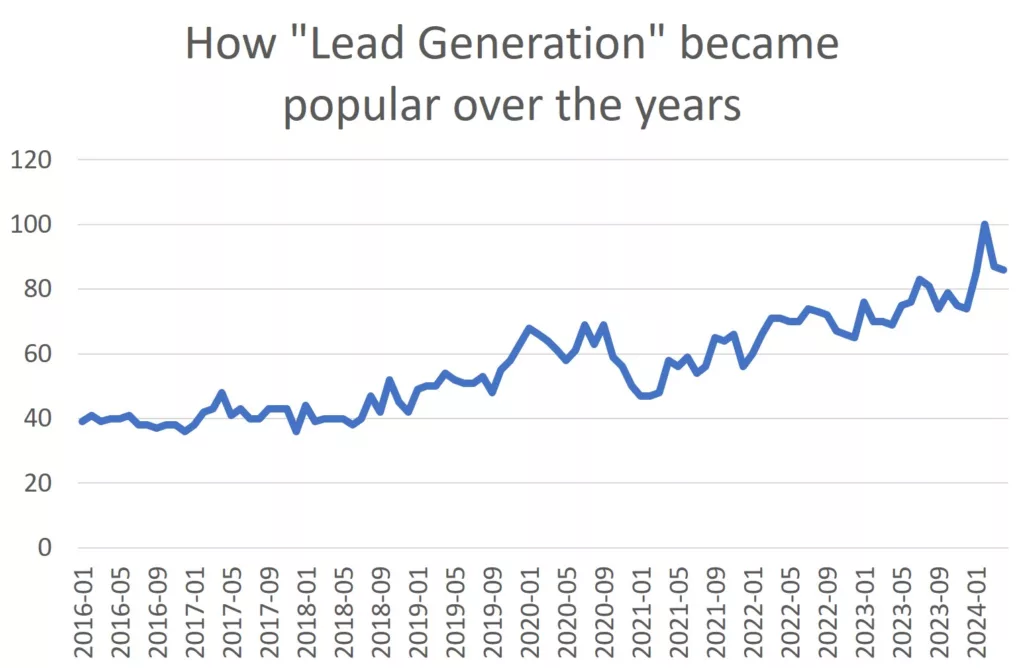I’ve tried out the services of “lead sellers” and wasn’t convinced. They’re at best ineffective, at worst dangerous for your reputation. I explain everything in this article.

Over the past few years, lead-generation proposals have invaded our inboxes. They promise to supply you with prospects all year round, thanks to automated prospecting by email or LinkedIn. Then, it’s up to you to convert them. I’ve talked to these lead sellers and even tried out the services of one of them. I’ve also talked to customers to understand the results that can be expected. These lead generation approaches should be avoided in most cases, as they represent a risk. I explain everything in this article.
If you only have 30 seconds
- The lead generation methods that have taken off in recent years are based on automation and message sequencing.
- Lead sellers” are increasingly aggressive in their communications, and some even offer a “money-back guarantee.”
- While some lead generation agencies are indeed experts in this field, beware of salespeople in exotic countries (India, for example). You may never see your money again (it happened to me😓).
- The return rate for automated methods is exceptionally low, and the reputational risk is underestimated. Over 90% of “prospects” don’t respond.
- Be careful with automated prospecting on LinkedIn. Not only do you risk being banned, but exposing yourself to your real profile can also make you look like a spammer. Remember that there are limits to the number of invitations you can send out.
- automation works when your product/service is of immediate use, regardless of the recipient.
Lead generation: an explosion since 2021
The popularity of the term “lead generation” is relatively recent. According to Google Trends, it was only at the beginning of 2021 that the popularity of this term began to increase. Based on the graph below, we can roughly say that searches on “lead generation” are 2 times more numerous in 2024 than before 2019. In 5 years, interest in lead generation has doubled. How can we explain this craze for what is, in the final analysis, the very essence of business? In the final analysis, lead generation is nothing more than the heart of any business, i.e., the search for customers.
.
Lead sellers: the fairground of “anything goes”
If you run an SME like me, you’ll no doubt have noticed how much your mailbox has changed in recent years. Lead sellers apply their recipes to themselves, inundating you with sequences of emails extolling their services. I receive between 3 and 5 unsolicited emails a week promising the impossible. I’ve noticed an evolution in the discourse. A few years ago, the promise was x appointments per month with prospects. For some time now, I’ve been promised customers and even a “satisfaction or your money back” guarantee. The sales pitch is much more aggressive, even if it means talking nonsense.
Between 90 and 99% of recipients of automated mailings don’t follow up.
The dynamics of lead generation
Before analyzing the rise of lead generation, I’d like to continue my thoughts on the nature of this activity. Basically, in business, you have 2 ways of finding customers:
- Inbound: your reputation and presence naturally attract customers to you
- Outbound: you “hunt” for customers.
So, we’re talking about outbound. You take action to reach out to customers. In the past, there was “cold calling,” trade fairs and shows, etc. Today, there’s “lead gen,” as it’s called. It’s based on a 3-pronged technological foundation:
- automation
- scrapping
- AI

Where does this lead generation trend come from?
No matter how hard I looked, I couldn’t find anything factual about the emergence of this trend. What is clear is that cold emailing predates 2019. This practice was more unbridled before the RGPD came into force. This boom is due to the convergence of 3 events.
COVID and digitalization
Many companies (including ours) have seen their activity slow down or stop altogether. The search for solutions to find new customers was therefore crucial. At this time, some companies seized the opportunity to sell their “solutions.” They promised to find customers for companies that desperately needed them.
At the same time, forced digitalization took place, which led many people to be more easily reached by digital means.
Technological foundation: AI, automation, scrapping
The technologies underpinning lead generation practices have undergone spectacular development in recent years. I’m thinking of general AI, generative AI, and intelligent emailing solutions. The ability to connect different solutions thanks to no code has also been a catalyst for sequences. These are scenarios that are triggered according to the prospect’s reaction.
Economic context
Finally, the economic context has also been one of the driving forces behind automated lead generation. We may have escaped the recession in Europe, but the economic slowdown is more prevalent than ever. In these conditions, finding new customers is a challenge. Lead sellers exploit this weakness to sell you the dream.

What do lead generation companies sell?
Without going into the technical details, let’s say that there are 2 types of lead sellers:
- Those who sell you a method and tools
- Those who sell you appointments
The former takes only a few risks. They set up the tools, tell you how to do it, and then it’s up to you. If it doesn’t work, you’re the one to blame. And then, you can go back to your consulting hours to get support. It’s like the gold rush. The shovel and sieve salespeople got rich, not the gold diggers.
The latter master the tools and offers you an all-in service. They take care of finding leads based on the personas you define. Over the past few months, I’ve witnessed a surfeit of promises in the latter category. You’re now promised “as many appointments as you can accept each month” and even “satisfaction or your money back.”

What does this mean for your brand image?
Where those who opt for these lead generation systems see business opportunities, I see a reputational risk.
When I first became interested in the subject, I had meetings with these dream sellers. Most of them told me their response rates were between 1% and 10%. This isn’t surprising for unsolicited B2B emails, despite all the reminders. Most of these emails end up in spam anyway.
This means that between 90 and 99% of the recipients of these automated mailings need to follow up on these unsolicited emails. That’s huge, and if you multiply that by the number of emails that are sent and the annoyance they cause, I think the risk is high:
- Your company will be badly perceived because of its practices
- Your domain name will suffer from “spamming” (cf. Google rules).
The response rate is the same for LinkedIn prospecting. Again, I’ve had meetings with people using automation and sequencing software. The maximum response rate was 10%, and the conversion rate was around 1% to 2%. LinkedIn prospecting is even more dangerous than email. If you’re going to prospect via LinkedIn, you must show your true face. You can’t hide behind a bogus email. So, there’s a risk that you’ll be spotted and banned (at least temporarily) by LinkedIn. This is all the more true since I was banned a few years ago for using an automation solution (Prospect ‘In, since bought out by Waalaxy).

In conclusion
I don’t want to give the impression that automated lead-generation techniques never work. I’ve also come across cases where my contacts were completely satisfied. They were selling services whose perceived value was immediate. For example, selling a solution for paying less tax will attract a lot of interest. You create the need. On the other hand, when you’re dependent on the company’s need (which is the case for most services and products sold in B2B, notably for our market research services), it becomes much more complicated. The probability of your email arriving just when the recipient needs it is very low.
If you enjoyed this post, please share it and comment.
Posted in Entrepreneurship, Marketing.


